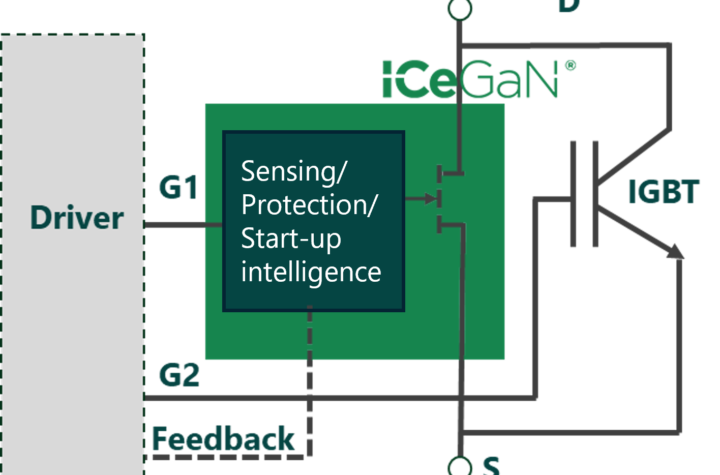
TMG International AB (TMGI) and Groupo Inversionistas Asociados (GIA) have entered into a joint venture to build and operate a TMGI magnesium die-casting foundry in Morelia, Mexico. This follows the signing of a letter of intent for the supply of a number of components with a leading U.S. based automotive parts supplier. The programmes are for die cast magnesium steering wheel armatures which will be produced in the new foundry from 2006. Automotive Purchasing News spoke to Petter Wessel Bjornstad, president and CEO of TMG International about the decision to go to Mexico and the future of magnesium.
Automotive Purchasing News (APN): What is behind your move to Mexico? How will that support OEMs in the region?
Bjornstad: Our original decision to build a TMG foundry in Mexico was all about economics. When we first approached the market in 2003 we were at a one to one exchange rate between the Dollar and the Euro therefore we could still demonstrate economic benefit to our clients even including the shipping costs from Poland to Mexico. For our North American clients, that benefit was dramatically reduced when the Dollar declined. We decided that we didn’t want to enter the currency business, so the simple solution was to build a foundry in North America for clients that assemble there and pay in dollars and manufacture in Poland for clients who assemble in Europe and pay in Euros. Since Mexico is the primary plant location of our Tier 1 clients, it became the obvious choice for us as well.
Additionally, our decision to build manufacturing close to our clients solved several problems inherent in shipping parts long distances from other countries. The short lead-time from production to assembly means reduction of capital tied to products in transit, reduction of transportation costs, reduction of packaging costs and the ability to quickly recover in the event of non-conforming parts. These benefits combined can really add up to significant bottom line increases for our clients.
With the J.I.T. (Just In Time) Lean Manufacturing practices our clients now employ, having a “Supplier Next Door†or down the road from their facilities appears to be a key element in our continued success in acquiring new business. It gives our clients a feeling of security knowing that we can deliver parts to them shortly after they request them so even if a problem should occur, we have the chance to fix it before it effects their production.
APN: Is there anything special/new about the technology that is being used – is it the Tonsberg system?
Bjornstad: When Jostein Eikeland, our Founder and Chairman, decided to become involved in magnesium die-casting, he did so with the idea of using the same principles he used to build two successful public companies in the IT Sector. We coined the term Tonsberg System to represent these principles. They focus on anything that can reduce human error and include improved processes that lower cycle time, reduce material waste and improve consistent part quality.
APN: In what other areas does TMG have a technological lead?
Bjornstad: We would like to think that our years of preparation and our significant capital contribution to building what we believe to be a better mouse trap have given us a technology lead in many areas, however, what we discovered is that technology itself does not impress the client. What our clients want is less expensive, consistently good quality parts delivered on time. The bottom line is that our investment in our manufacturing process has allowed us to deliver a value proposition that our clients want.
APN: On your website, you say that magnesium offers cost efficiency, quality and reliability. Please tell us more about these properties – with examples where possible.
Bjornstad: Magnesium is one of the most abundant elements in the world. New supplies of the raw material have now made magnesium competitive with other materials like aluminium. Therefore, magnesium, especially when material waste can be reduced, becomes a very cost efficient material when viewed in the big picture of weight reduction. Compared to aluminium, magnesium is one third lighter, so it supports the automotive mandate of weight reduction. When it comes to quality and reliability, magnesium is more flexible, and stronger than aluminium, in fact, it is the strongest metal by weight, so engineers are eager to use it once they understand its principle characteristics. Take steering wheel armatures for example, a part TMGI is focusing on. When you make a wheel from magnesium it is a safer wheel, yet it still reduces weight in the vehicle.
APN: What do you see as the new applications for magnesium in the motor vehicle?
Bjornstad: Magnesium is a great material to reduce weight without sacrificing safety and has many potential applications in the motor vehicle. In some cases, a large magnesium casting can replace multiple parts, clips, and fasteners – significantly reducing part count and simplifying assembly, obviously at a lower cost. Some examples where we at TMGI believe magnesium could replace aluminium, iron or steel are in the steering wheel core, the steering column, the lift gate and door inners, seat frames, the transfer case and even the engine block. Time will tell, but all things considered, we anticipate a ten-fold increase in magnesium weight in motor vehicles over the next 10 years.





More Stories
4 Things to Check Before Buying a Used Motorcycle
6 Tips for Extending the Life of Your Tires
The Hottest Bike Customization Trends Every Rider Needs to Know